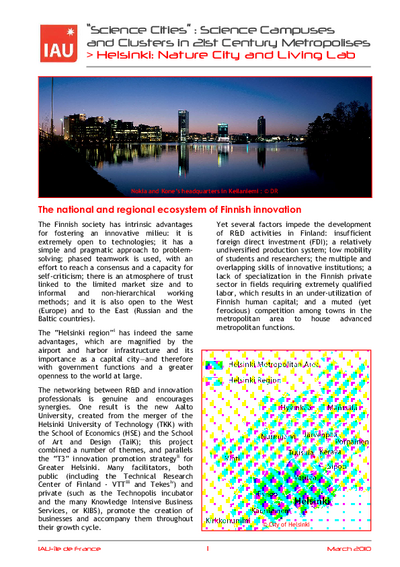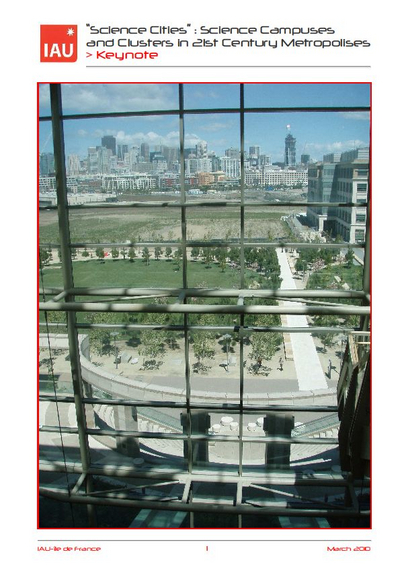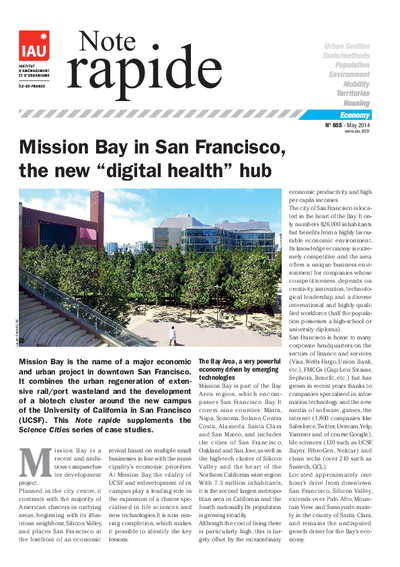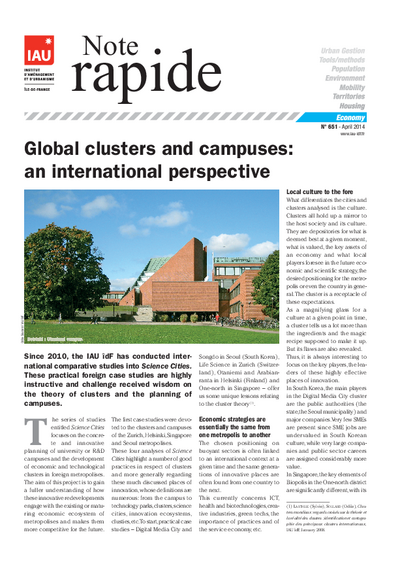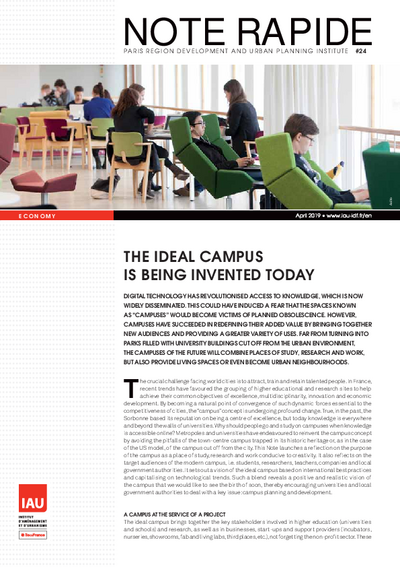Science Cities: Science Campuses and Clusters in 21st Century Metropolises
The Finnish society has genuine assets to form an innovative milieu: openness to new technologies; pragmatic approach to problem-solving, consensus building, ability for self-criticism...
Helsinki: real networking of actors in R & D and innovation
The Helsinki region indeed enjoys these assets, but they are magnified by its port and airport infrastructure and its status as capital city, which gives it command functions and greater openness to the world. In this “pocket-size” metropolis, one can observe a real networking of R & D and innovation actors, promoting synergies: for instance the new Aalto University (as well as Metropolia and Laurea) connecting existing university curricula and campuses according to themes echoing the "T3" strategy pursued in the Greater Helsinki metropolitan area, or the many public and private facilitators helping to create companies and supporting them during their growth cycle. T3 means Tiede+Taide+Talous in Finnish (in other words, a strategy aimed at bringing together the science/technology sectors with art/design and business/finance ones).
Several factors still hinder the development of R & D in Finland
The lack of FDI, of business diversification in the production system, the low mobility rate of students and researchers, the multiplicity and overlapping of powers of the organizations pertaining to the innovation system, the lack of specialization of the Finnish private sector in areas requiring highly skilled workforce, leading to a relative under-utilization of human capital and to a latent risk of manpower shortage, are among the factors restraining the development of R & D in Finland. Finally, it seems that the municipalities of the metropolitan area are engaged in a real competition to host higher metropolitan functions: thus the announcement of the creation of the Aalto University has attracted some tensions between Espoo and Helsinki to host its headquarters.
Dynamics of the Otaniemi cluster
The success of the Otaniemi cluster revolves around several key elements: urban centers providing cultural, natural and infrastructural externalities in its immediate vicinity; the presence of national research centers, largely supported by the government; quality education; the spontaneous development of companies which have become leaders in their field, with their many spin-offs in Greater Helsinki. "Co-opetitions" between companies in order to maximize profits, pull the dynamics of the cluster. Recent initiatives such as Nokia’s Innovation Mill or Otaniemi Microclusters show that Otaniemi’s actors are seeking together answers to all challenges posed by its ecosystem (international attractiveness, start-up growth) for job creation and increased added value.
The Arabianranta district
This mixed area with a strong identity enjoys a great reputation. Designed to be a laboratory of contemporary housing, it has also become de facto a laboratory for the creation of ICT contents, through their full integration in public and private spaces and the presence of students and researchers from the University of Arts and Desing (TaiK). Arabianranta is as innovative in terms of its urban design as it is in terms of lifestyles, consumption and work performed there. It has many attributes sought by the creative classes of Helsinki to settle and eventually generate a cluster effect in connection with design and media arts taught in the district. However, it seems premature to consider that it is the main creative cluster of Nordic countries.
This study is linked to the following themes :
International |
Economy
